Plywood, when given a thought might not be of that much importance but closely looked upon we can clearly state this can bring any home project to life. It is a versatile engineered wood product made by layering thin sheets of wood veneer together with adhesives. There are various types of plywood, each designed for specific applications and uses.
Post your Requirement
Here are some common types of plywood available in the Indian market and their uses in any construction:-
- Structural Plywood
- Marine Plywood
- Exterior Plywood
- Interior Plywood
- Hardwood Plywood
- Softwood Plywood
While the choice of plywood type depends on the specific requirements of your project, including the intended use, environmental conditions, and aesthetic considerations, a slight knowledge about the product can help you greatly achieve the aesthetics you would want to follow in your home project.
Factors To Consider Before Choosing The Right Plywood For Your Project
Choosing the right plywood for your project is crucial to ensure the structural integrity, durability, and aesthetic appeal of the finished product. Here are the steps to assist you in selecting the appropriate plywood for your specific project:
1. Confine Your Project Requirements
- Identify the purpose of the plywood in your project. Is it for structural support, finishing, or decorative purposes? Is it a plywood sheet you would want for a plywood door or waterproof plywood?
- Consider the environmental conditions the plywood will be exposed to, such as moisture, temperature, and humidity. For such cases, waterproof plywood can be your saviour.
- Assess any load-bearing or weight requirements for your project. The plywood price will increase with the weight of the plywood you would need.
2. Understand Plywood Grading
- Plywood is typically graded based on the quality of its face and back veneers. Some of the common grading terms are mentioned as A, B, C, D, and X. On one hand, Grade A is the highest quality, with few imperfections, while on the other hand, Grade D may have more noticeable defects.
- Select the appropriate grade based on the visibility of the plywood in your project. For visible areas, higher-grade plywood with a smoother surface is preferable. For instance, a modern plywood door, or any plywood door in general would be costlier than plywood sheets.
3. Consider Plywood Type
- Choose the type of plywood that best matches your project’s requirements. Consider the options mentioned earlier, such as structural plywood, marine plywood, exterior plywood, hardwood plywood, etc.
- Refer to the project requirements to decide if you need waterproof plywood, fire-resistant, lightweight, or flexible plywood.
- For instance, if you are planning to get plywood attached to your washroom or kitchen then Boiling Waterproof (BWP) plywood is a wise choice to make, on the other hand, if you want to know which is a great selection for your furniture and drawer fitting you should blindly have faith on Boiling Water Resistant BWR plywood.
Before moving ahead, let’s dig a little deeper into the difference between BWP plywood and BWR plywood. BWP (Boiling Water Proof) plywood is highly water-resistant and durable, ideal for wet environments like kitchens and marine use. BWR (Boiling Water Resistant) plywood offers some water resistance but is less robust, suitable for occasional moisture exposure in indoor settings like furniture. The key difference is that BWP plywood can endure prolonged immersion in boiling water, while BWR plywood is less resilient and not intended for extended water contact. Choose BWP for demanding water-exposed applications and BWR for more typical indoor use with occasional moisture exposure.
4. Check Thickness And Size
- Plywood comes in various thicknesses and sizes. Ensure that you select the right thickness to meet the structural or load-bearing requirements of your project.
- Determine the dimensions required for your project and select plywood sheets that fit those dimensions. If necessary, cut or join sheets to achieve the desired size.
5. Assess Adhesive Types
- Different types of adhesives are used in plywood manufacturing. Exterior and marine plywood should have waterproof adhesives. For interior use, choose adhesives that meet your specific needs, such as formaldehyde-free options for indoor air quality.
- The choice of adhesive affects bond strength, moisture resistance, and chemical resistance. Applications exposed to moisture need to use waterproof adhesives, like phenolic resin, to prevent delamination, which is present in waterproof plywood. Selecting the right adhesive ensures the plywood performs as expected and meets safety and quality standards.
6. Consider Plywood Species
- If you’re using hardwood plywood, consider the wood species that best suits your project’s aesthetics. Popular species include oak, maple, cherry, and birch, among others.
- The purpose of choosing the species is related to the aesthetics of your project or to fulfilling your requirements for the project.
7. Evaluate Cost
- Budget constraints are important. Plywood prices can vary significantly based on type, grade, and quality, as mentioned earlier. Consider your budget and try to find a balance between cost and quality.
- The better quality of plywood would demand you to increase your budget which is why it is integral to measure the budget and make the decision accordingly.
8. Read Manufacturer’s Specifications
- Always review the manufacturer’s specifications and recommendations for the specific plywood you wish to purchase. These specifications will provide important information about the plywood’s properties, recommended applications, and limitations.
- Plywood price may vary- for instance, plywood of superior quality, characterized by its flawless surface, comes at a premium price when compared to lower-grade plywood with imperfections like knots and discolourations. Greater thickness in plywood sheets usually entails a higher cost due to the increased strength and durability has to offer to the customers.
9. Consult With Experts
- If you are uncertain about the right plywood for your project, consult with experts, such as contractors, architects, or professionals in the field. They can offer valuable insights and recommendations based on their experience.
- For instance, installing a plywood door is best done by a professional carpenter, and designing a modern plywood door is perfectly done by an architect. For the right service, choose the right person.
Conclusion
By following these steps and carefully considering your project’s requirements, you’ll be better equipped to choose the right plywood for your specific needs. Keep in mind that the choice of plywood can significantly impact the quality and longevity of your project. Furthermore, plywood prices differ with the difference of plywood you would need.

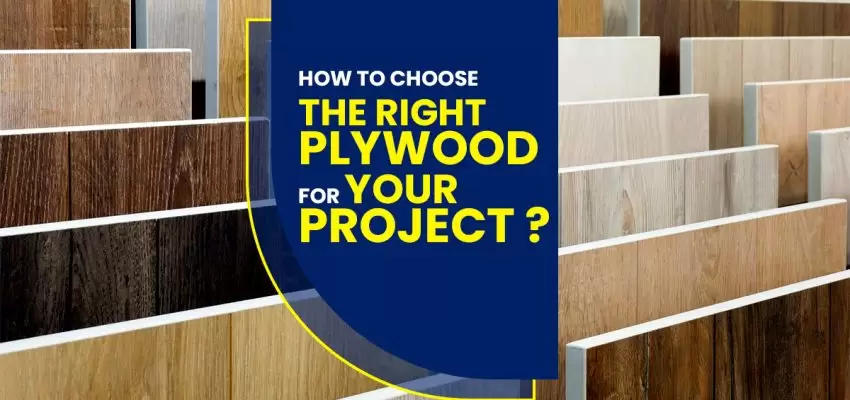
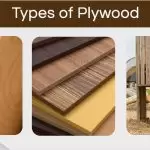
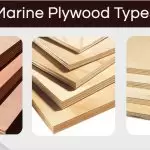
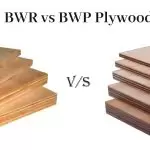
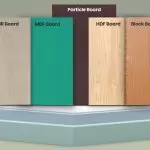

















Post A Comment